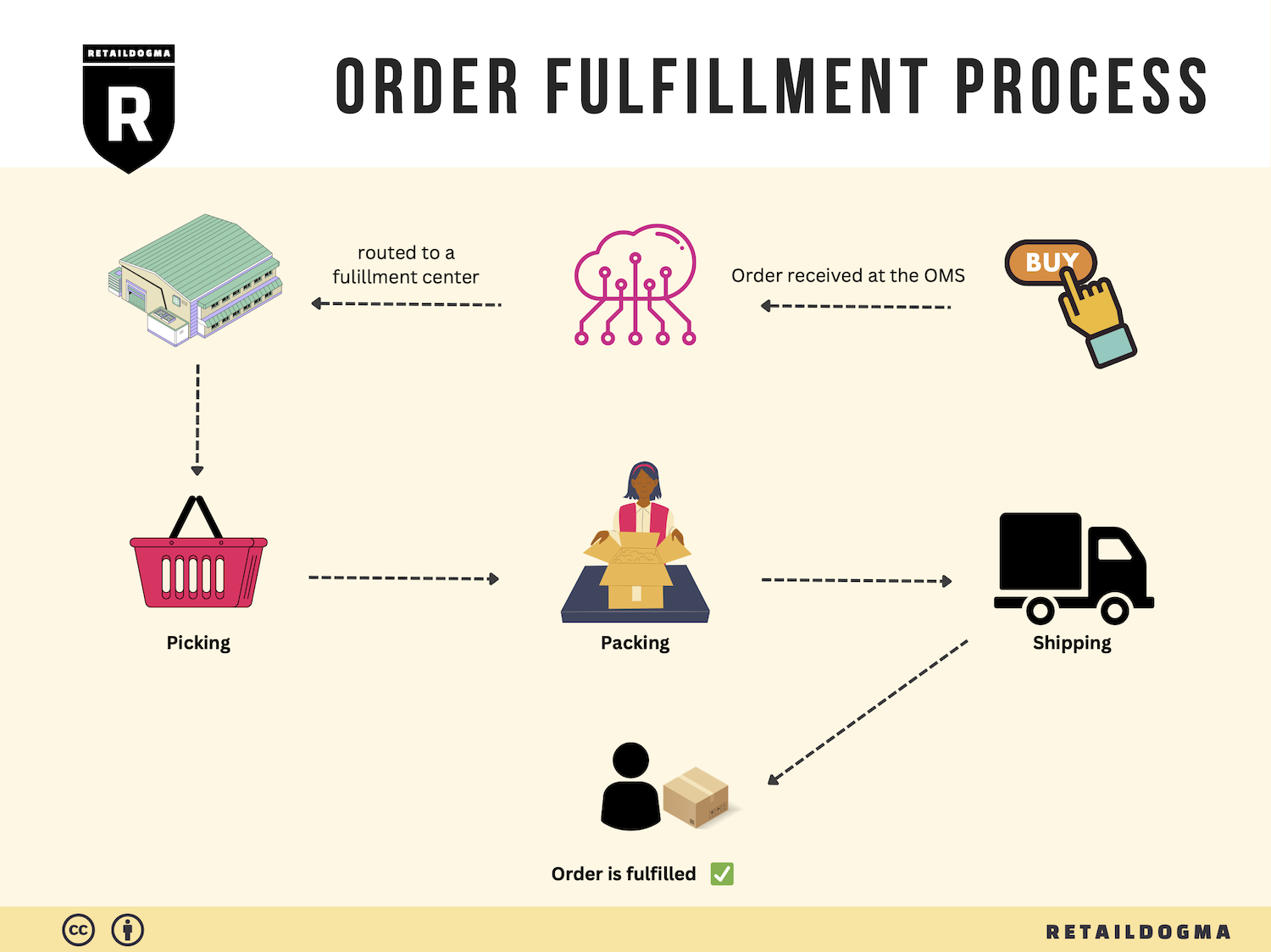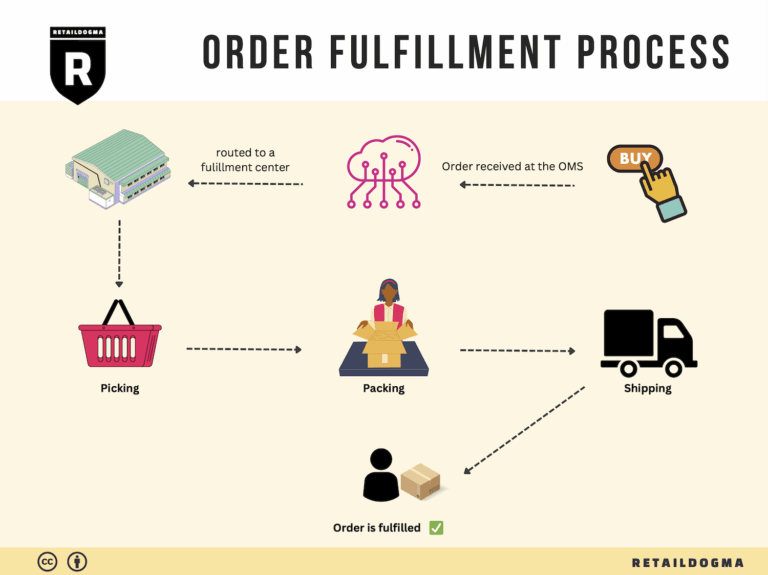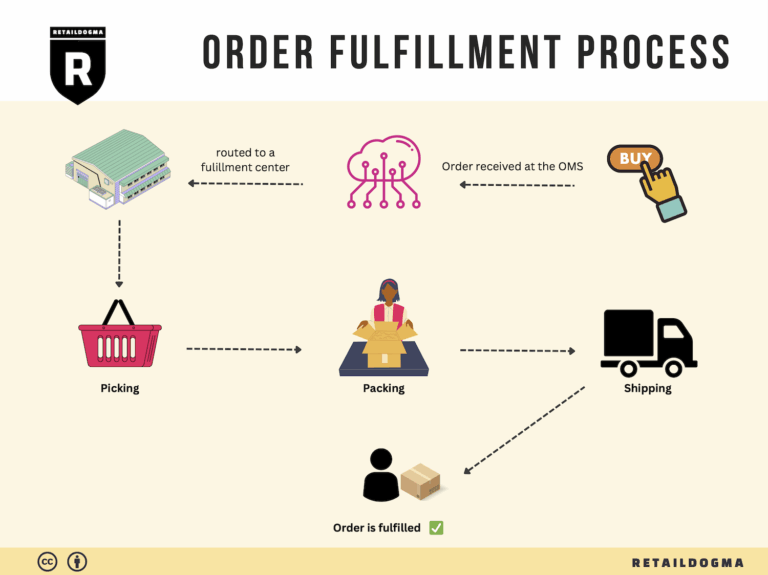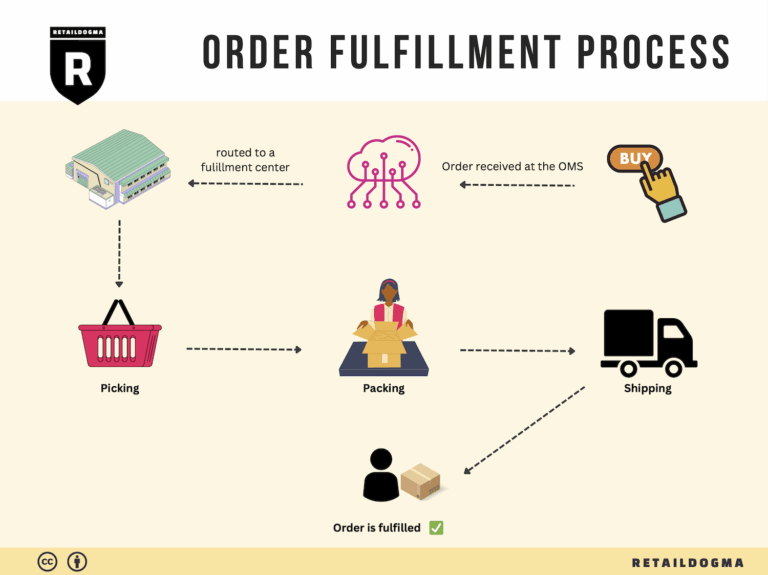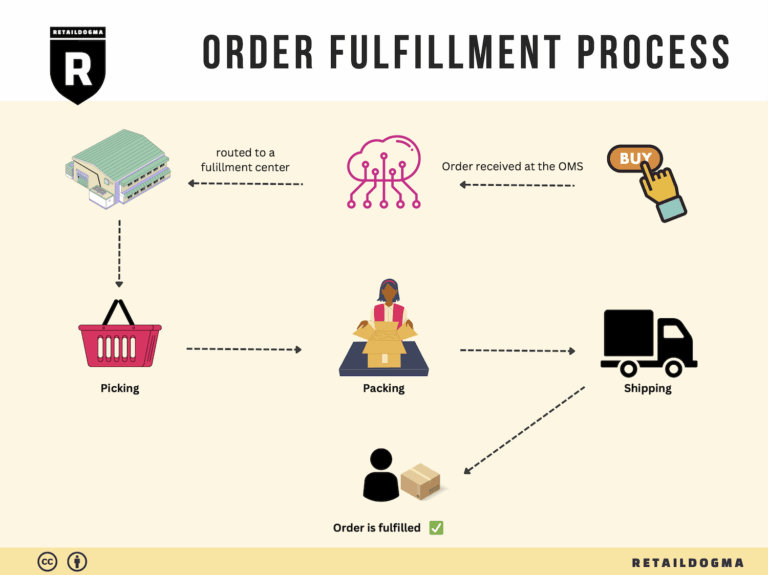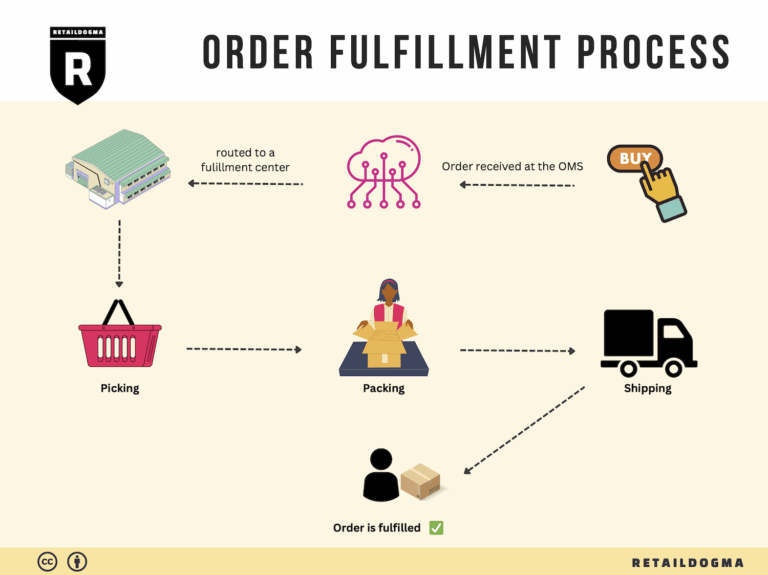Ecommerce Fulfillment Services: The Ultimate Guide (2025)
What is E-commerce Fulfillment? An Introduction for Growing Businesses
Understanding the Challenges of Order Fulfillment
As your e-commerce business grows, the excitement of increased sales can quickly turn into a daunting challenge—managing the packing and shipping of orders. Many entrepreneurs find themselves overwhelmed by the sheer volume of orders, struggling with logistics, inventory management, and customer service. This is where e-commerce fulfillment comes into play.
What is E-commerce Fulfillment?
At its core, fulfillment is the process of getting a product from your warehouse or fulfillment center to your customer’s doorstep. It encompasses several critical steps, including inventory storage, order processing, picking, packing, shipping, and handling returns. For growing businesses, mastering this process is essential for maintaining customer satisfaction and scaling operations effectively.
Overview of Fulfillment Models
In this guide, we will explore various fulfillment models that can help streamline your logistics. The two primary options are Fulfillment by Amazon (FBA) and third-party logistics (3PL).
-
Fulfillment by Amazon (FBA) allows sellers to store their products in Amazon’s warehouses. Amazon then handles the logistics of storage, packing, and shipping, while also managing customer service.
-
Third-Party Logistics (3PL) providers offer a more flexible approach. They handle storage and shipping but allow you more control over the branding and customer experience. This model can also support multi-channel fulfillment, enabling you to sell on various platforms beyond Amazon.
Core Services of Fulfillment
To help you navigate the complexities of fulfillment, we will cover the essential services offered by fulfillment partners, including inventory management, order tracking, returns processing, and shipping options. Understanding these services is crucial for selecting the right partner for your business.
Choosing the Right Fulfillment Partner
Selecting a fulfillment partner can be a daunting task, especially with so many options available. We’ll provide practical criteria to consider when evaluating potential partners, such as scalability, technology integration, service levels, and pricing structures.
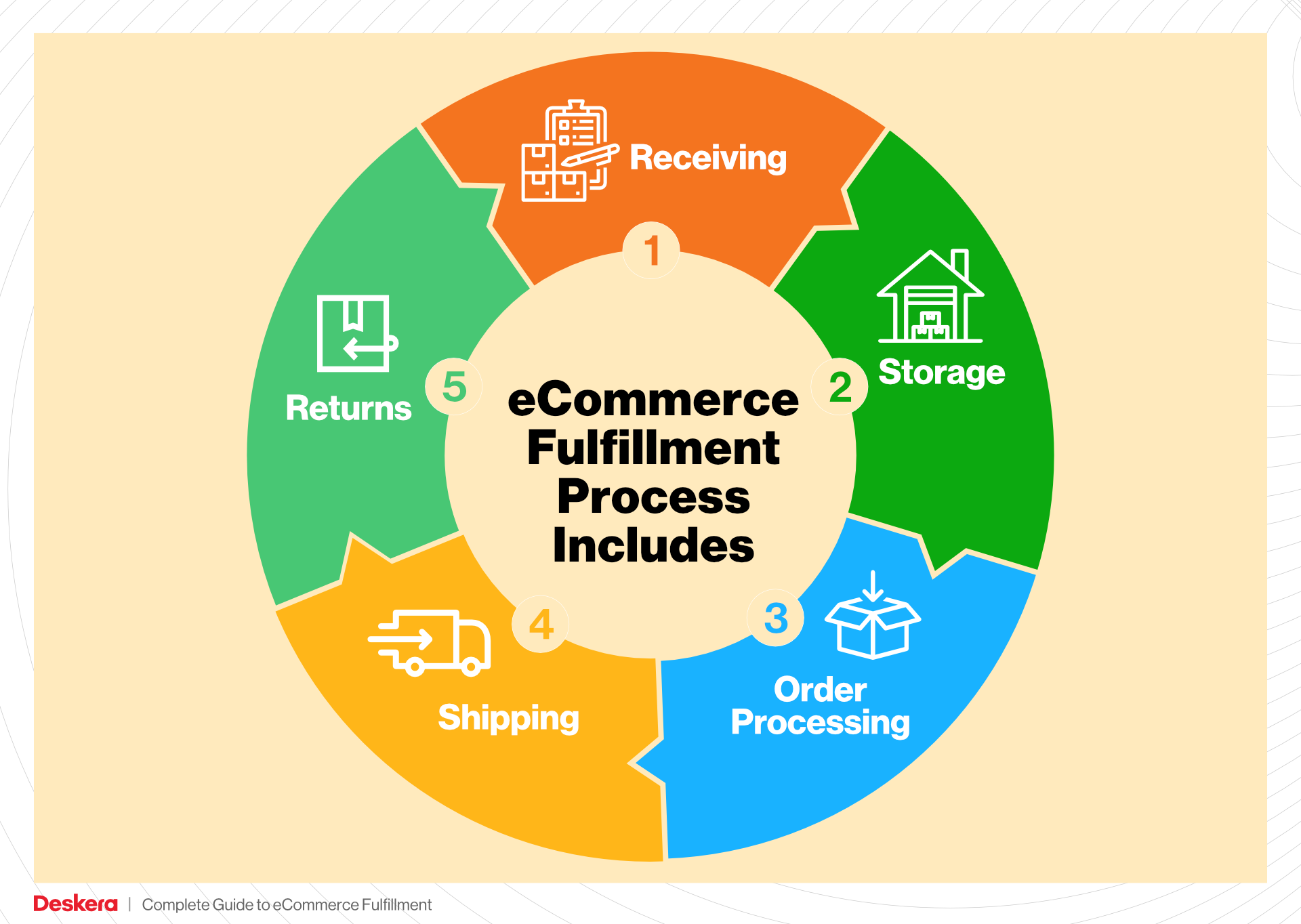
Pricing Considerations
Cost is always a key factor in any business decision. We will break down the pricing models commonly used in fulfillment services, helping you to understand how to budget for these essential operations without compromising on service quality.
Empowering Your Logistics Decisions
The ultimate goal of this guide is to empower you to make informed and strategic decisions about your logistics. By understanding the ins and outs of e-commerce fulfillment, you can streamline your operations, enhance customer satisfaction, and position your business for sustainable growth. Whether you’re considering FBA, exploring 3PL options, or simply looking to optimize your current processes, this guide will provide you with the insights you need to succeed.
What You’ll Learn In This Guide
- What is E-commerce Fulfillment? An Introduction for Growing Businesses
- The Order Fulfillment Process: From ‘Buy’ Button to Customer’s Door
- Comparing Fulfillment Models: In-House vs. 3PL vs. Dropshipping
- A Deep Dive into Amazon FBA: Pros, Cons, and Who It’s For
- Core Services Offered by Fulfillment Centers
- How to Choose a Fulfillment Partner: A 6-Point Checklist
- Understanding Fulfillment Pricing: A Breakdown of Common Fees
- Frequently Asked Questions (FAQs) about Fulfillment
- Conclusion: Is Outsourcing Fulfillment the Right Move for Your Business?
- Important Disclaimer
The Order Fulfillment Process: From ‘Buy’ Button to Customer’s Door
1. Receiving Inventory
The first step in the order fulfillment process is receiving inventory. This involves the acceptance of goods from suppliers into the warehouse or fulfillment center. When products arrive, they are checked against purchase orders to ensure accuracy in quantity and condition. This step is crucial because discrepancies can lead to stockouts or delays in fulfilling customer orders.
During receiving, each product is typically assigned a Stock Keeping Unit (SKU), a unique identifier that helps track inventory levels and movements. Properly managing SKUs during this phase ensures that inventory is organized and can be easily located in subsequent steps. A well-executed receiving process minimizes errors and sets the tone for efficient operations down the line.
2. Warehouse Storage
Once inventory is received and accounted for, the next step is warehouse storage. This involves placing the products in designated locations within the fulfillment center. Efficient storage strategies, such as utilizing shelving units, bins, or pallets, are essential for maximizing space and accessibility.
The importance of this step lies in the organization of the warehouse. Products should be stored in a manner that facilitates easy retrieval, which directly impacts order picking efficiency. Key terms associated with warehouse storage include “slotting,” which refers to the practice of determining the best locations for products based on their sales velocity and dimensions. An effective slotting strategy not only optimizes space but also reduces the time spent locating items during the picking process.
3. Order Picking
Order picking is the process of selecting items from the warehouse to fulfill customer orders. Once an order is placed, warehouse staff use a pick list—a document that outlines the items and quantities needed for the order—to gather the products. This step is crucial because it directly affects order accuracy and customer satisfaction.
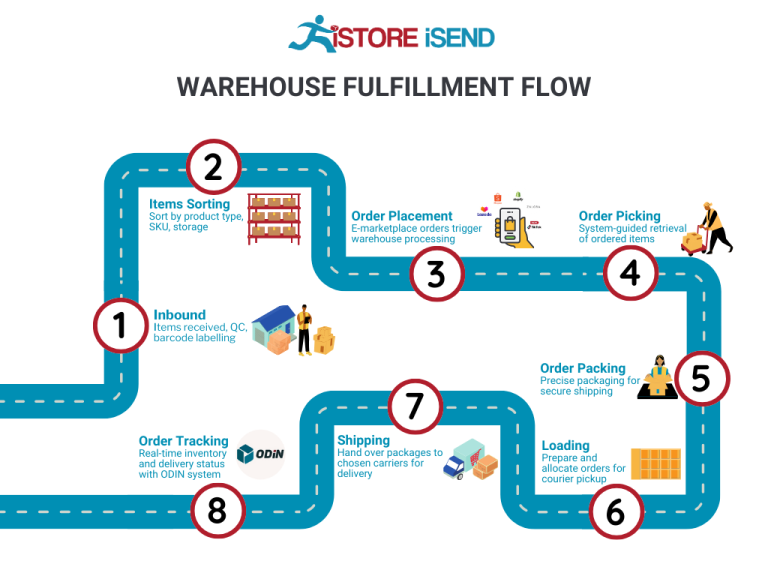
Efficient order picking can be achieved through various methods, such as single order picking (fulfilling one order at a time) or batch picking (collecting items for multiple orders simultaneously). The choice of method often depends on order volume and warehouse layout. Implementing technology, such as barcode scanners or pick-to-light systems, can streamline the picking process and reduce human error. The goal is to ensure that the right products are picked in the right quantities, setting the stage for a smooth packing process.
4. Order Packing
After items have been picked, they move on to the order packing stage. This involves preparing the selected products for shipment. During packing, items are carefully placed into boxes or shipping materials, ensuring they are secure and protected from damage during transit.
The significance of this step cannot be overstated, as proper packing directly impacts delivery speed and customer satisfaction. Packaging should be optimized for both efficiency and cost-effectiveness. Key terms here include “dimensional weight pricing,” which refers to shipping costs based on the size of the package rather than just its weight. Understanding this concept helps businesses choose the most appropriate packaging to minimize shipping costs while ensuring product safety.
5. Shipping & Delivery
The final step in the order fulfillment process is shipping and delivery. Once orders are packed, they are labeled and handed over to shipping carriers for delivery to customers. This step is critical, as timely delivery can significantly influence customer satisfaction and repeat business.
Businesses must choose the right shipping methods based on factors such as cost, speed, and destination. Additionally, providing tracking information to customers enhances transparency and trust in the fulfillment process. Key terms relevant to this stage include “last mile delivery,” which refers to the final leg of the shipping journey from the distribution center to the customer’s doorstep. Efficient last mile delivery strategies can reduce costs and improve delivery times, ultimately leading to a better customer experience.
In conclusion, understanding and optimizing each of these five steps in the order fulfillment process—from receiving inventory to shipping and delivery—can significantly enhance operational efficiency and customer satisfaction in e-commerce businesses. By implementing best practices and leveraging technology at each stage, businesses can scale their operations effectively while meeting customer expectations.
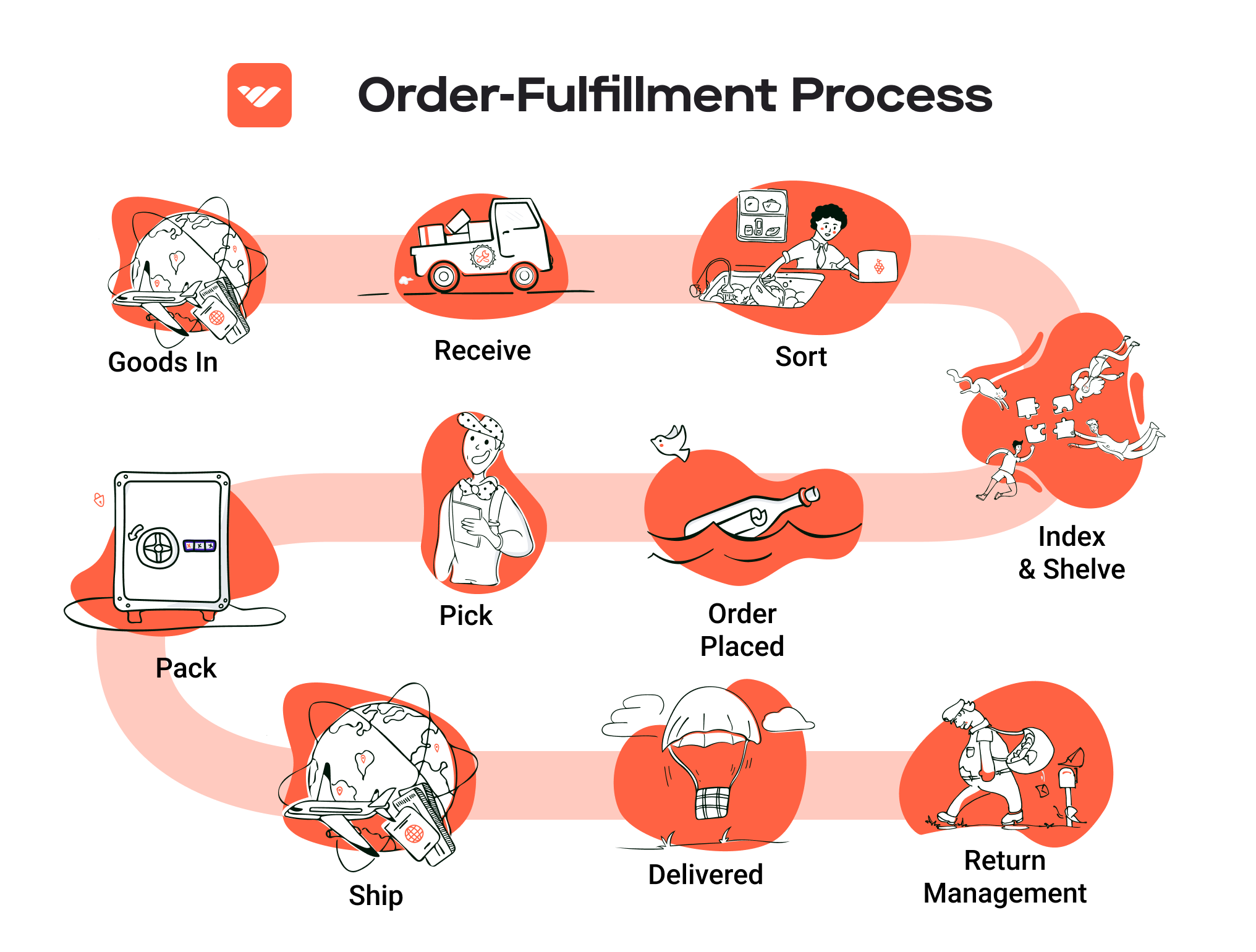
Comparing Fulfillment Models: In-House vs. 3PL vs. Dropshipping
Fulfillment Model Comparison
| Model | Who Handles Inventory | Best For (Business Stage) | Key Advantage | Key Disadvantage |
|---|---|---|---|---|
| In-House Fulfillment | The business itself | Established businesses | Full control over inventory and customer experience | High overhead costs and resource-intensive |
| Third-Party Logistics (3PL) | Third-party provider | Scaling businesses | Cost-effective, scalable, and expert management | Less control over logistics and potential delays |
| Dropshipping | Supplier | Start-ups and small businesses | Minimal upfront investment and low risk | Lower profit margins and dependency on suppliers |
In-House Fulfillment
In-house fulfillment involves managing the entire logistics process within your own facilities. This model is particularly suited for established businesses that have the resources to handle inventory storage, order processing, picking, packing, and shipping. The key advantage of in-house fulfillment is the complete control it provides over inventory management and customer experience, which can enhance brand loyalty and service quality. Companies can customize packaging, expedite order processing, and directly manage returns, ensuring that all aspects of the customer journey meet their standards. However, this model comes with significant drawbacks, including high overhead costs related to staffing, warehousing, and technology investments. Additionally, maintaining a robust in-house operation can be resource-intensive, potentially diverting attention from core business strategies and growth initiatives.
Third-Party Logistics (3PL)
Third-party logistics (3PL) providers offer a comprehensive solution for businesses looking to outsource their fulfillment operations. This model is particularly beneficial for scaling businesses that want to optimize their logistics without the burden of managing it themselves. A 3PL handles everything from inventory storage to order processing, packing, and shipping, allowing businesses to focus on marketing and sales. The key advantage of utilizing a 3PL is the cost-effectiveness and scalability it offers; businesses can reduce overhead by outsourcing logistics and leverage the provider’s expertise and technology. Moreover, 3PLs often have established networks that can ensure faster shipping times and improved compliance with complex marketplace requirements, such as those imposed by Amazon. However, the primary disadvantage is that businesses relinquish some control over their logistics, which can lead to challenges in communication and potential delays in order fulfillment. Additionally, reliance on a third party means that any inefficiencies in their operations can directly impact your customer experience.
Dropshipping
Dropshipping is a fulfillment model where retailers sell products without holding inventory. Instead, when a customer places an order, the retailer purchases the item from a third-party supplier who then ships it directly to the customer. This model is ideal for start-ups and small businesses as it requires minimal upfront investment and allows entrepreneurs to test market demand without the risk of excess inventory. The key advantage of dropshipping lies in its low-risk profile; businesses can offer a wide range of products without the financial burden of purchasing inventory upfront. However, dropshipping has its drawbacks, including lower profit margins due to the reliance on suppliers for fulfillment. Additionally, businesses face challenges related to inventory management, as they depend on suppliers to keep stock and fulfill orders accurately and on time. This dependency can lead to inconsistent customer experiences, especially if the supplier fails to meet quality or shipping expectations.
In summary, the choice of fulfillment model should align with your business stage, operational capabilities, and strategic goals. Each model presents unique advantages and disadvantages, and understanding these can help you make an informed decision as you scale your e-commerce operations.
A Deep Dive into Amazon FBA: Pros, Cons, and Who It’s For
Understanding Fulfillment by Amazon (FBA)
Fulfillment by Amazon (FBA) is a logistics and fulfillment service provided by Amazon that allows sellers to store their products in Amazon’s fulfillment centers. Once a customer places an order, Amazon takes care of the picking, packing, shipping, and customer service on behalf of the seller. This service is designed to streamline the e-commerce process, enabling sellers to focus on growing their business while Amazon handles the complexities of order fulfillment.
How FBA Works
-
Product Preparation: Sellers send their products to Amazon’s fulfillment centers. Amazon provides guidelines on how to prepare and package items to ensure they meet their specific requirements.
-
Inventory Storage: Once received, products are stored in Amazon’s warehouses. Sellers can monitor their inventory levels through the Amazon Seller Central dashboard.
-
Order Processing: When a customer places an order for a product listed on Amazon, the order is automatically processed. Amazon’s system identifies the appropriate fulfillment center and prepares the order for shipment.
-
Picking and Packing: Amazon employees pick the item from the warehouse shelves, pack it securely, and prepare it for shipping.
-
Shipping: The packed order is shipped directly to the customer using Amazon’s logistics network. Customers benefit from fast shipping options, including same-day or two-day delivery for Prime members.
-
Customer Service: Amazon manages all customer service inquiries related to FBA orders, including handling returns and refunds, which can significantly reduce the workload for sellers.
Pros of Fulfillment by Amazon (FBA)
-
Prime Eligibility: Products fulfilled through FBA are eligible for Amazon Prime, which attracts a significant number of loyal customers who prioritize fast shipping. This can lead to increased sales and visibility.
-
Customer Trust: Amazon’s reputation as a reliable retailer enhances customer trust. Buyers are more likely to purchase products fulfilled by Amazon due to the assurance of quality service and customer support.
-
Multi-Channel Fulfillment: FBA can be used not only for sales on Amazon but also for other sales channels, allowing sellers to leverage Amazon’s logistics capabilities to fulfill orders from their own websites or other marketplaces.
-
Scalability: FBA allows businesses to scale operations without the need for significant investment in logistics infrastructure. Sellers can quickly adapt to increased order volumes without the hassle of managing warehousing and shipping logistics.
-
Simplified Returns Management: Amazon handles returns for FBA orders, streamlining the process for sellers and providing customers with a hassle-free return experience.
Cons of Fulfillment by Amazon (FBA)
-
High Fees: One of the most significant drawbacks of FBA is the cost. Amazon charges various fees, including storage fees, fulfillment fees per item sold, and additional charges for long-term storage. These can quickly add up, impacting profitability.
-
Strict Inventory Rules: Amazon has stringent guidelines regarding inventory management. Sellers must comply with these rules or risk penalties, including removal of listings or additional fees for non-compliance.
-
Commingling Risks: FBA involves commingling inventory, which means that your products may be stored alongside those of other sellers. This can lead to risks, such as receiving returns that are not your products or issues related to quality control.
-
Limited Control: By using FBA, sellers relinquish control over aspects of the fulfillment process, including packaging and branding. This can be a concern for businesses that prioritize a specific customer experience or brand identity.
-
Dependency on Amazon: Relying heavily on Amazon for fulfillment can create vulnerabilities. Changes in Amazon’s policies, fee structures, or service levels can directly impact your business operations and profitability.
Who is FBA Best For?
Fulfillment by Amazon (FBA) is particularly suited for:
-
Small to Medium-Sized E-Commerce Businesses: Those looking to scale quickly without investing heavily in logistics can benefit significantly from FBA’s capabilities.
-
Sellers with a High Volume of Sales: Businesses that have a consistent volume of orders can take advantage of the efficiencies FBA offers, making it easier to manage logistics without sacrificing service quality.
-
Brands Seeking Prime Access: If a seller’s target market includes a significant number of Amazon Prime members, utilizing FBA can provide a competitive edge in visibility and sales.
-
Sellers Interested in Multi-Channel Fulfillment: Those who wish to sell across multiple platforms while leveraging Amazon’s robust logistics infrastructure will find FBA a practical solution.
-
Businesses with Limited Fulfillment Resources: Companies without the capacity to manage warehousing, shipping, and customer service can streamline operations significantly by outsourcing these functions to Amazon.
In conclusion, while Fulfillment by Amazon (FBA) provides substantial benefits in terms of speed, customer trust, and operational efficiency, it is essential for sellers to weigh these advantages against the potential costs and limitations. Understanding the nuances of FBA will empower e-commerce business owners to make informed decisions that align with their growth objectives and operational capabilities.
Core Services Offered by Fulfillment Centers
Inventory Management & Warehousing
Inventory management and warehousing are foundational services provided by fulfillment centers that ensure e-commerce businesses can maintain optimal stock levels while minimizing overhead costs. This service involves the systematic oversight of inventory from the moment it arrives at the warehouse until it is shipped to customers.
Fulfillment centers employ advanced warehouse management systems (WMS) that enable real-time tracking of inventory levels, locations, and movements. This technology allows businesses to make data-driven decisions regarding stock replenishment and purchasing strategies. The benefits of effective inventory management include reduced carrying costs, minimized stockouts, and improved order accuracy, which collectively lead to enhanced customer satisfaction.
Moreover, strategic warehousing solutions often involve multiple fulfillment centers located across various regions. This geographical advantage enables faster shipping times and lower shipping costs, allowing e-commerce businesses to meet customer expectations for quick delivery, especially in today’s fast-paced market.
Pick and Pack Services
Pick and pack services are critical to the order fulfillment process, wherein fulfillment center staff retrieve items from the warehouse (pick) and prepare them for shipment (pack). This process is designed to be efficient and accurate, ensuring that customers receive the correct products in a timely manner.
The benefits of utilizing pick and pack services include increased operational efficiency and reduced labor costs for e-commerce businesses. By outsourcing this function to a fulfillment center, businesses can focus on core activities such as marketing and product development rather than the logistical challenges of order processing.
Additionally, fulfillment centers often use automation and technology to streamline the pick and pack process. This can include barcode scanning systems that enhance accuracy and speed, as well as optimized packing techniques that minimize shipping costs by reducing package dimensions. As a result, businesses can achieve higher order fulfillment rates and improved customer satisfaction.
Kitting and Assembly
Kitting and assembly services involve the grouping of multiple products into a single package or kit, which can be particularly beneficial for e-commerce businesses that sell subscription boxes, gift sets, or promotional bundles. This process not only enhances the customer experience by providing a curated product offering but also simplifies inventory management by reducing the number of individual SKUs that need to be tracked.
The primary advantage of kitting is the ability to create unique product offerings that can attract customers and drive sales. For instance, a beauty brand could offer a skincare kit that combines several products at a discount, encouraging customers to purchase more. Furthermore, kitting allows businesses to streamline their fulfillment processes by reducing handling times during the picking and packing stages.
By outsourcing kitting and assembly to a fulfillment center, e-commerce businesses can also leverage specialized equipment and skilled labor, which can lead to faster turnaround times and increased flexibility in responding to market demands. This service is particularly advantageous during peak seasons when demand may surge, enabling businesses to scale operations without investing in additional infrastructure.
Returns Management (Reverse Logistics)
Returns management, or reverse logistics, refers to the process of handling product returns from customers back to the fulfillment center. This service is essential for e-commerce businesses, as return rates can be high—especially in industries like fashion and electronics. A well-managed returns process can significantly impact customer satisfaction and brand loyalty.
Fulfillment centers typically offer comprehensive returns management services that include receiving returned items, inspecting them for quality, restocking them if they are in sellable condition, or disposing of them according to the business’s guidelines. Efficient returns management systems enable businesses to process returns quickly, allowing customers to receive refunds or exchanges without unnecessary delays.
The benefits of a robust returns management system are multifaceted. Firstly, it enhances the customer experience by providing a hassle-free returns process, which can lead to repeat purchases and positive word-of-mouth. Secondly, it allows businesses to maintain accurate inventory records, ensuring that stock levels reflect returned items promptly. Finally, effective returns management can help identify patterns in product returns, enabling businesses to make informed decisions about product quality and customer preferences.
In conclusion, the core services offered by fulfillment centers—inventory management and warehousing, pick and pack services, kitting and assembly, and returns management—are integral for e-commerce businesses looking to scale their operations efficiently. By leveraging these services, businesses can enhance their operational capabilities, improve customer satisfaction, and ultimately drive growth in a competitive marketplace.
How to Choose a Fulfillment Partner: A 6-Point Checklist
Location & Warehouse Network
The geographical location of your fulfillment partner’s warehouses can significantly impact your shipping times and costs. A well-distributed warehouse network enables faster delivery to your customers and can help you meet the growing demand for expedited shipping.
Key Questions to Ask:
– Where are your fulfillment centers located, and how does this impact shipping times to my target markets?
– Do you have warehouses that can serve international markets if I plan to expand?
– How do you manage inventory across multiple locations to ensure stock availability?
Technology & Integrations
In today’s e-commerce landscape, technology plays a crucial role in streamlining operations. A fulfillment partner that utilizes advanced Warehouse Management Systems (WMS) can provide real-time inventory tracking, order management, and analytics.
Key Questions to Ask:
– What technology platforms do you use for inventory management and order processing?
– Can your system integrate with my existing e-commerce platforms (e.g., Shopify, Amazon Seller Central)?
– Do you offer real-time tracking for both my team and my customers?
Specializations (e.g., cold storage, oversized items)
Depending on the nature of your products, you may require specialized fulfillment services. If you deal with perishables, fragile items, or oversized products, ensure your fulfillment partner has the necessary facilities and expertise.
Key Questions to Ask:
– What types of specialized fulfillment services do you offer (e.g., cold storage, kitting, or handling hazardous materials)?
– How do you ensure compliance with industry regulations for specific product types?
– Can you provide case studies or references from other clients with similar product needs?
Scalability & Capacity
As your business grows, your fulfillment needs will evolve. A suitable partner should not only accommodate your current order volume but also have the capacity to scale operations as your business expands.
Key Questions to Ask:
– What is your capacity for handling increased order volumes during peak seasons?
– How quickly can you scale your services to meet my business growth?
– Are there minimum order requirements or limits on the number of SKUs I can store with you?
Pricing and Contracts
Understanding the pricing structure and contractual obligations is essential to avoid unexpected costs. Compare the total cost of services, including storage fees, shipping rates, and additional services.
Key Questions to Ask:
– Can you provide a detailed breakdown of your pricing model?
– Are there additional fees for services such as returns management or special packaging?
– What is the length of the contract, and are there penalties for early termination?
Customer Support & Reviews
Reliable customer support can make a significant difference in your fulfillment experience. Look for a partner that offers responsive and effective communication. Additionally, researching reviews and testimonials can provide insights into their reliability and service quality.
Key Questions to Ask:
– What support channels do you offer (e.g., phone, email, chat), and what are your response times?
– Can you share testimonials or case studies from current clients?
– How do you handle issues such as lost shipments or inventory discrepancies?
Conclusion
Choosing the right fulfillment partner is a critical decision that can significantly impact your e-commerce business’s efficiency and customer satisfaction. By carefully considering these six key points—Location & Warehouse Network, Technology & Integrations, Specializations, Scalability & Capacity, Pricing and Contracts, and Customer Support & Reviews—you can ensure that you select a partner that aligns with your business goals and can support your growth journey. Always conduct thorough due diligence, ask the right questions, and evaluate potential partners based on their ability to meet your specific needs.
Understanding Fulfillment Pricing: A Breakdown of Common Fees
Initial Setup Fees
Initial setup fees are one-time charges incurred when you first engage a fulfillment service. These fees can vary widely based on the provider and the complexity of your operation. Typically, they cover the costs associated with integrating your e-commerce platform with the fulfillment provider’s systems, setting up your inventory management, and establishing any necessary documentation or compliance procedures.
Calculating initial setup fees usually involves a flat fee that covers the basic integration and onboarding process. However, if your business requires custom solutions—such as specific software integrations or tailored fulfillment processes—these costs can increase. It’s essential to discuss your specific needs with your fulfillment partner to understand all potential charges involved in the setup phase.
Receiving Fees
Receiving fees are charged when your inventory arrives at the fulfillment center. These fees compensate the warehouse for unloading, inspecting, and storing your products. The fee structure can be based on the volume of inventory received, typically calculated per pallet or per unit.
Receiving fees can vary depending on the complexity of the receiving process. For instance, if your goods require special handling or additional quality checks, expect higher fees. Efficient inventory management practices, such as sending in larger shipments less frequently, can help reduce these costs. Be sure to clarify with your provider how they define receiving fees and any associated services included.
Storage Fees (per pallet/bin)
Storage fees are ongoing charges for holding your inventory in the fulfillment center. These fees are generally calculated based on the space your products occupy, either by pallet or by bin. Storage fees can be charged monthly or quarterly, depending on the fulfillment provider’s policies.
The calculation of storage fees can vary, with some providers offering tiered pricing based on the volume of space used. For example, if your inventory occupies multiple pallets, you may receive a bulk discount. Additionally, some fulfillment centers may charge different rates for standard and long-term storage. It’s crucial to understand the specific terms and conditions regarding storage fees, especially if you anticipate fluctuations in inventory levels.
Pick & Pack Fees (per item/order)
Pick and pack fees are incurred each time an order is processed. These fees cover the costs of selecting items from storage, packing them, and preparing them for shipment. The fee structure can be based on the number of items picked and packed per order or on a flat rate per order.
Calculating pick and pack fees often depends on the complexity of the order. For example, orders with multiple items or those that require special packaging may incur higher fees. Efficient order processing can help mitigate these costs. Consider optimizing your product catalog and inventory organization to reduce the number of picks required for each order. Discuss potential volume discounts with your fulfillment partner as your order volume increases.
Shipping Fees
Shipping fees are the costs associated with delivering orders to customers. These fees can vary significantly based on factors such as shipping method, package weight and dimensions, and destination. Most fulfillment providers offer various shipping options, from standard to expedited services, each with its own pricing structure.
Shipping fees are typically calculated based on the dimensional weight of the package and the shipping carrier’s rates. Understanding the different shipping options available can help you choose the best balance of cost and delivery speed for your customers. Additionally, some fulfillment partners may offer discounted shipping rates through partnerships with carriers, which can lead to significant savings.
Tips for Getting an Accurate Quote
When seeking fulfillment pricing, it’s essential to request a detailed quote that encompasses all potential fees. Here are some tips to ensure you receive an accurate and comprehensive quote:
-
Be Transparent: Provide your fulfillment partner with accurate details about your expected order volume, product dimensions, and any special handling requirements. This information will help them provide a more tailored quote.
-
Ask About All Fees: Inquire about all potential fees, including those that may not be immediately obvious, such as returns processing or additional service charges for seasonal spikes.
-
Compare Providers: Get quotes from multiple fulfillment providers to compare pricing structures and services. This will give you a better understanding of the market and help you identify the best value.
-
Understand the Terms: Ensure you fully understand the terms and conditions associated with the quote, including any minimum commitments or penalties for underperformance.
-
Request a Breakdown: Ask for a detailed breakdown of each fee type, so you can clearly see how the total cost is calculated. This transparency will help you make informed decisions and plan your budget effectively.
By following these guidelines, you can ensure that you receive a quote that accurately reflects your business’s unique fulfillment needs, enabling you to scale your operations with confidence.
Frequently Asked Questions (FAQs) about Fulfillment
1. What is Amazon fulfillment?
Amazon fulfillment refers to the logistics processes involved in storing, processing, and delivering products sold on the Amazon marketplace. This includes inventory management, order processing, picking, packing, shipping, and handling returns, all tailored to meet Amazon’s specific standards and customer expectations.
2. What’s the difference between Fulfillment by Amazon (FBA) and Fulfillment by Merchant (FBM)?
FBA allows sellers to send their products to Amazon’s fulfillment centers, where Amazon takes care of storage, picking, packing, shipping, and customer service. FBM, on the other hand, enables sellers to maintain control over the entire fulfillment process, including storage, packaging, and shipping directly to customers from their own facilities.
3. What is a 3PL (Third-Party Logistics)?
A 3PL is a company that provides outsourced logistics services, which can include transportation, warehousing, and order fulfillment. E-commerce businesses often partner with 3PLs to enhance their fulfillment capabilities without the overhead of managing logistics in-house.
4. How much do fulfillment services cost?
Fulfillment service costs can vary widely based on factors such as order volume, storage needs, and the specific services provided (e.g., kitting, returns management). Generally, you can expect costs to include storage fees per pallet or cubic foot, picking and packing fees per order, and shipping costs based on weight and destination. It’s advisable to request tailored quotes from potential fulfillment partners to understand their pricing structures.
5. Can I use a 3PL while also using FBA?
Yes, many sellers use a hybrid approach, leveraging both FBA and a 3PL. This allows for greater flexibility in managing inventory across multiple sales channels and can help mitigate risks associated with relying solely on Amazon’s fulfillment services.
6. How do I manage returns with a 3PL?
Most 3PLs offer comprehensive returns management services. This includes receiving returned items, inspecting them, restocking them if they are in good condition, or disposing of them as per your instructions. Utilizing a 3PL can streamline your returns process and save you significant time and effort.
7. How does the integration process with Amazon work for a 3PL?
Integrating a 3PL with your Amazon Seller Central account typically involves linking your accounts through software that allows for real-time data synchronization. This ensures that orders placed on Amazon are processed efficiently by the 3PL, maintaining accurate inventory levels and order statuses.
8. What are the key benefits of using a 3PL for Amazon fulfillment?
Using a 3PL can provide several advantages, including cost savings through reduced overhead, faster shipping times due to strategically located fulfillment centers, personalized customer support, and the ability to scale operations without the need for extensive in-house logistics infrastructure.
9. Do I need to worry about compliance when using a 3PL?
Yes, compliance with Amazon’s fulfillment requirements is crucial. A reputable 3PL will have experience navigating these regulations and will ensure that your inventory meets Amazon’s packaging, labeling, and documentation standards, thus maintaining your eligibility for programs like Amazon Prime.
10. Can I sell internationally using Amazon fulfillment services?
Absolutely. Many 3PLs provide international fulfillment services, allowing you to reach customers across different countries. They can help you navigate local regulations, customs, and logistics to ensure a smooth shipping process to international Amazon marketplaces.
Conclusion: Is Outsourcing Fulfillment the Right Move for Your Business?
The Case for Outsourcing Fulfillment
Outsourcing fulfillment can be a transformative decision for e-commerce businesses looking to scale. By leveraging a dedicated fulfillment partner, you can unlock significant time savings, allowing you to focus on core business activities such as product development, marketing, and customer engagement. Fulfillment services streamline order processing, inventory management, and shipping logistics, which not only enhances operational efficiency but also improves customer satisfaction through faster delivery times.
Scalability is another compelling advantage of outsourcing. As your business grows, so do the complexities of managing logistics. A proficient fulfillment partner provides the infrastructure necessary to handle increased order volumes without the need for substantial upfront investment in warehousing and staffing. This flexibility enables you to respond to market fluctuations and seasonal demand spikes, ensuring that you are always equipped to meet customer expectations.
Moreover, tapping into the expertise of a fulfillment service can mitigate risks associated with compliance and operational challenges. These providers are well-versed in the nuances of e-commerce logistics, including Amazon’s strict requirements and international shipping regulations. Their specialized knowledge can help you avoid costly mistakes and optimize your supply chain.
However, the success of outsourcing fulfillment hinges on selecting the right partner. Look for a provider that aligns with your business goals, understands your unique needs, and offers robust technology for inventory management and order tracking.
As you evaluate your current logistics strategy, consider conducting an audit of your shipping processes. Are you experiencing delays, increased costs, or customer complaints? If so, it may be time to explore whether a fulfillment partner could be the key to unlocking your business’s growth potential. Take the first step toward enhanced efficiency and customer satisfaction by assessing your options today.
Important Disclaimer
⚠️ Important Disclaimer
The information in this guide is for educational purposes. Fulfillment services, pricing, and platform features change frequently. Always conduct your own due diligence and consult with providers directly before making business decisions.
